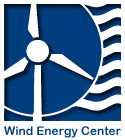Wind power represents a fast growing renewable source of energy that has significant environmental advantages over conventional supplies. However achieving its full potential as one of the main sources of electricity will require overcoming some critical challenges such as (1) accurately predicting wind power output levels under different wind conditions, and (2) ensuring that wind farms can successfully operate within the current and anticipated energy markets of the future. The first of these is a modeling problem, whereas the operational concerns can be addressed through appropriate control. In this talk, we discuss ongoing research developing a suite of models and algorithms for wind farm design, analysis and control. We focus on models and control algorithms that will enable us to move from static layout optimization and control for maximizing power output to predicting and tracking time-varying power signals. The ability to model the behavior of wind farms over changing operating conditions and to track a power signal will become increasingly important as wind transitions into the role of a major power system supplier that needs to provide the same grid services as conventional generators. We discuss two models, a data driven model of the full flow field and a time-varying wake model. We then use the wake model within a model-based receding horizon control framework to enable a wind farm to participate in secondary frequency regulation, which is a grid service that corrects short-term imbalances in active power generation and load. Our results show that including a dynamic description of the aerodynamic interactions between the turbines yields large increases in efficiency over traditional wind farm control approaches that use static wake models or ignore inter-turbine interactions. In particular, using a model that captures the flow physics enables up-regulation with derates (reductions in wind farm power set points) that are less than the maximum up-regulation requested. The success of this approach in reducing the required derate has important economic implications for wind plant operators as it directly corresponds to reducing the loss of bulk power revenue associated with participating in regulation markets.
Dennice F. Gayme received a B. Eng & Society from McMaster University in 1997 and an M.S. from the University of California at Berkeley in 1998, both in Mechanical Engineering. In 2010, she received her Ph.D. in Control and Dynamical Systems from the California Institute of Technology, where she was a recipient of the P.E.O. scholar award in 2007 and the James Irvine Foundation Graduate Fellowship in 2003. Prior to her doctoral work (1999-2003) she was a Senior Research Scientist in the Systems and Control Technology and Vehicle Health Monitoring Groups at Honeywell Laboratories in Minneapolis, MN. She joined the Mechanical Engineering Department at Johns Hopkins University in 2012, where she is currently an Assistant Professor. In 2015 she was awarded a JHU Catalyst Award. Prof. Gayme's research interests are in the study of large-scale networked and spatially distributed systems in applications such as power networks, wind farms and wall-turbulence.New Directions in Wind Farm Modeling and Control
Date:
Thursday, December 1, 2016 - 4:00pm
Location:
E-lab 2 Kellogg Room (Room 118)
Year:
2016
Semester:
Speaker(s):
Dennice F. Gayme, Assistant Professor, Department of Mechanical Engineering, Johns Hopkins University

